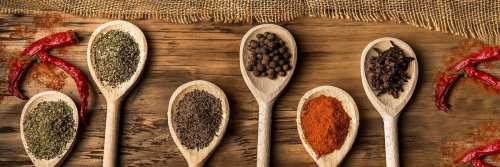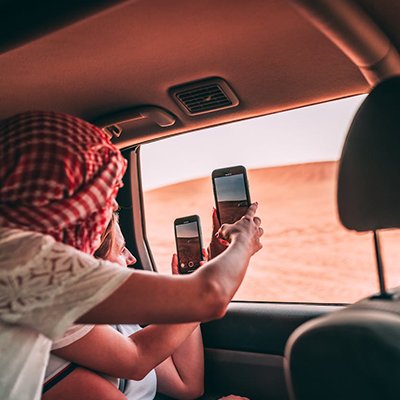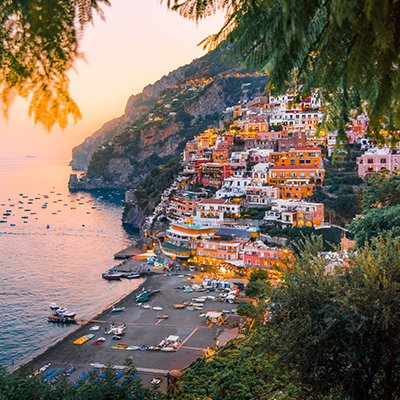COVID 19 lockdown is when your curious taste buds can go on a culinary journey without putting a foot out the front door. That is, unless you need to dash to the supermarket to grab those necessary ingredients that aren't stashed away in your pantry.
Think of those daring seafarers in ancient times who braved the high seas to seek out aromatics and spices during the Renaissance era. Or, the quirky fact that Columbus went looking for India and black pepper, only to find America and red pepper. You too can be daring and go on your own spice quest in the tumultuous aisles of your grocery store, bravely avoiding other marauding shoppers.
Historically spices have been used in magic, medicine, cosmetics, religion, and preservation of foods, with the earliest records of spices coming from the ancient cultures of China, India, and Egypt. Middle-East Arab caravans carried spices over landlocked routes, and Alexandria in Egypt eventually became the main trading port of spices.
It's little wonder that the tropical countries of India, Indonesia, and Ethiopia use the most spices in the world in their traditional dishes. Hot climates and spices go hand-in-hand. Slurping on a spicy curry will cool your body down. Food is less likely to go rotten, which explains the spectacular use of spices in meat dishes that are more likely to spoil if left plain.

Vibrant, aromatic, and colorful spice markets can be seen throughout many countries. La Boqueria (Barcelona, Spain) has been in existence since 1200AD. The beautiful architecture draws your eyes, as much as the colorful array of pungent spice offerings, such as Spanish paprika and strings of peppers artfully displayed.
Turkey has its world-renowned Spice Bazaar in Istanbul. The back alleys overflow with piquant spices, and there's the age-old tourist trap of sorting out the real from the fake saffron.
When in Oaxaca, Mexico, the must-do exploration of Mercado Benito Juárez and Mercado Central de Abastos will have you reeling from food obsession inclinations. Heady aromas of coriander and cumin make your nose twitch, while traditionally garbed local women from the mountains swirl around the pathways to sell their wares. In Rome, Italy, head straight to the old spice seller in Campo de' Fiori for that perfect spice blend to marry with pasta.
Spicy food is virtually an aphrodisiac to many. The very thought of eyes tearing up, tongues on fire, and sweat dripping off brows while eating can send devotees into spasms of blissful delight.
Below are a few countries to inspire your home cooking abilities for those addicted to hot food:
India
India is known for having some of the spiciest food on the planet, with top marks won hands-down for their pork vindaloo curry. Initially made in Goa, it's influenced by the Portuguese. There are numerous variations of this tasty dish, but the original version is a dry sauce-based offering of pork fat, vinegar, garlic, jaggery (cane sugar), and Kashmiri chili that will set your mouth ablaze.

The mutton curry of laal maas will have you digging for a large helping, as will the pungent and aromatic chicken chettinad. The fiery lamb meatballs known as rista are in a red curry with loads of coriander that perfectly marries with cumin rice. Unless you are a fiend for real fire lighting up your mouth, steer clear of the Bhut jolokia chili, as it's the hottest chili in the world. Look up the Khari Baoli spice market in Delhi on YouTube and tease your taste buds with a visual feast.
Sri Lanka
Sri Lanka comes in behind India concerning sweating while you eat. Once a part of the ancient spice trade route, many of its accompaniments are bursting with flavor and heat. Think of coconut sambal made from chili paste, dried fish, lime juice and ground coconut.
Extra power to the heat factor is given to a kukul mas curry made of green chilies and curry leaves with extra chili and curry powder thrown in for good measure. Another spice treat that boils like lava is the devilish hot dish of kottu roti. Or, ignite your mouth with lamprais—meat marinated in sambal chili sauce and presented on a banana leaf.
Mexico
Many Mexicans consider that food without chilies just isn't worth eating. Of course, the inimitable taco appears around the world. At least you may be able to alter the heat depending on what chili is used in the mixture or added to the treat before devouring it.

For heat freaks, pozole is the poison you are looking for. It's loaded with garlic, onion, avocado, chilies, cabbage, and salsa. Passionate heat lovers can indulge in stuffed peppers or chicken soup named chilate de pollo. Another sizzling dish is cochnita pibil, that's a serving of highly seasoned suckling pig.
Thailand
Thai food is a global favourite and found in most countries in one form or another. This unique cuisine has its own distinct flavours, and dishes are often a combination of spicy and sour.
Make sure you take a deep breath before you chow down on a bowl of gaeng tai pla (think dried chilies, galangal, turmeric and kaffir leaves, fermented fish innards, fish, pumpkin, eggplant, yardlong beans, and bamboo shoots). It will blow your mouth apart.
Som tam is Isaan's papaya salad peppered with fiery hot chilies. Gaeng kua kling is from southern Thailand, and it will pour lava down your throat. The Land of Smiles was probably nicknamed this by waiters serving up devastatingly hot dishes to ignorant tourists.

Malaysia
Malaysian cuisine has been greatly influenced by the Chinese and Indians. The national dish of nasi lemak won't set your mouth on fire unless you load it up with the side dishes of sambal or chili paste. Many dishes are like this: wan ton noodle, masala dosa, yong tau foo, and chicken rice, and all require the addition of heat to light up your mouth.
If you want that death-defying mouthful of fire without adding anything, pig out on curry noodles, mee mamak, or a rendang curry. Otak-otak is for the adventurous soul into braving heat that simply won't go out. Consisting of dried chilies and mixed with minced fish, you don't want to be misled about this one.
Gail Palethorpe, a self proclaimed Australian gypsy, is a freelance writer, photographer and eternal traveller. Check out her website Gail Palethorpe Photography and her Shutterstock profile.















